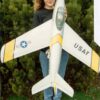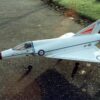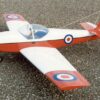Custom Polystyrene

Over the 30 years that Bill-Kits has existed, as well as producing thousands of pairs of wings for model aircraft, we have made hundreds of items from polystyrene foam that have nothing to do with miniature aviation. I will outline some of the alternative projects that we have been involved with, sadly there are not too many pictures of most of the items but for those who are interested kindly read on.
Probably the most mundane things I ever make are spacers that fit between 2 piece plastic shelves, these make the shelves much more ridged and able to support weight without bending.
Still awake! Then I’ll carry on. Spoilers for cars are always in demand. Obviously different airfoil sections produce different pressures so there is plenty of variables to experiment with.
From land to sea now, hydrofoils for both, windsurfers, boats and surfboards have all been on the worksheet, along with many varied rudders. Still afloat we once produced an airfoil sectioned steering vane that automatically steered an ocean going yacht, like an auto pilot for boats.
Wind farms for electricity generation seem to be cropping up everywhere and Bill-Kits has been involved in the prototype manufacture of 3 new types that use airfoil sections to harness the power of the wind in a different way to the giant windmills that are so common. One uses vertical blades like a merry go round, another uses horizontal groups of blades like biplanes and another is experimenting with flapping wings!
Back with models for a moment, we have produced many fuselages along with turtle decks, floats for seaplanes, auto gyro blades and blue foam formers for large model fuselages. This method is often used nowadays, in place of the traditional lite ply, using blue foam for the formers gives more surface area to glue covering or skinning balsa onto, with no increase in weight.
Now for a bit of a strange one, I can honestly say that I have made many items whose purpose to me is entirely unknown! Some for the M.O.D. and others for engineering companies. Few of these shapes resemble a wing, most are tubes and odd shapes, but they all help to pay the bills. Fixed wing and aquatic drones have also got the old grey matter moving over the years.
One very interesting project was a sort of hover board being developed by the British Antarctic Survey. This lifting body was an idea to make movement easier over rough ice and frozen tundra.
Finally (until I remember some more) the ultimate polystyrene aircraft, A REAL ONE! The full size single seat EGO, which featured polystyrene wings, canard, fins and rudders, covered in carbon fibre along with a carbon fibre fuselage. This futuristic looking aircraft has a wingspan of almost 8 metres and a length of 3.7 metres and cruises at 100 kts. Sadly due to high overall construction costs the company only produced 3 aircraft but the chief designer is still hopeful that more will grace the skies in the future.




